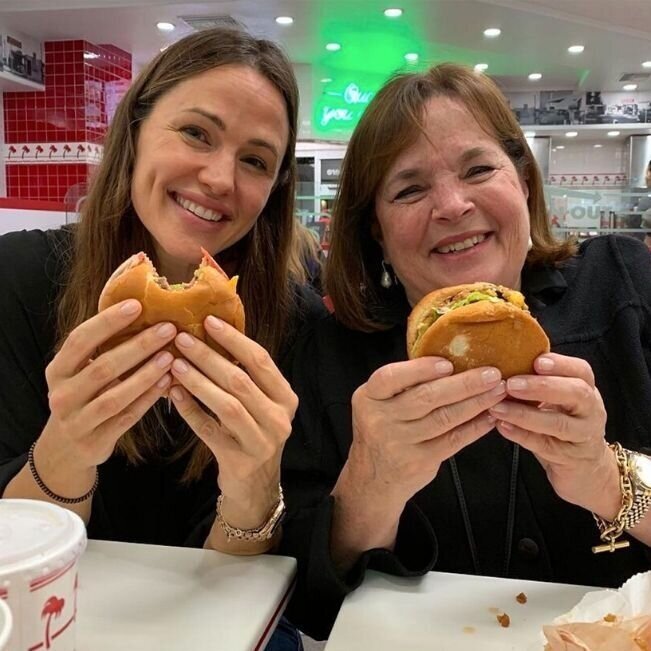Find your competitive advantage through brand positioning
Brand positioning is the difference between a last resort meal at the airport and a celebrity wedding reception.
If you asked 10 people what their perception of McDonald’s is and then contrasted it with their perception of In-N-Out, you’d notice a stark difference. McDonald’s is typically a guilty pleasure on a road trip or a last resort at the airport—but not somewhere you’d want to hang out with friends on a Friday night.
In-N-Out is a completely different story.
If you’re ever in LA, you can spot an In-N-Out because at all hours of the day, there’s a line of cars around the building. They have ravenous fans. Celebrities post selfies eating their burgers. Lily Allen even had her wedding reception there.
If you’re trying to understand the difference between these two companies, looking at their product won’t help you. McDonald’s and In-N-Out are almost identical in what they offer: Both are fast food restaurants, centered largely around burgers. They both use drive-thrus and are similarly priced.
So why is our perception of each so different? The answer is brand positioning.
“Understanding and articulating why you exist, how you exist, and who you exist for is essential in today’s highly competitive world.”
What is brand positioning?
Brand positioning is how you define your place in the market and the unique value you provide to your customers. While your stellar product and excellent customer service will eventually set you apart, before that comes into play, it’s your story that gets you in the door and makes people pay attention.
Positioning is the foundational piece for all internal and external communication, no matter who you're talking to. Understanding and articulating why you exist, how you exist, and who you exist for is essential in today’s highly competitive world. It's the blueprint that your future product, sales, and marketing teams will reference to make decisions.
Most founders have inadvertently done some positioning work when creating their first pitch deck or website. That's because positioning is required for launching a company. As you're thinking about your product, you're engaging in positioning work by narrowing down what you are and what you are not.
Positioning vs messaging
Brand messaging is how you translate your positioning into language that captures your users’ attention, and drives them to action. It will show up in your website copy, pitch decks, and sales collateral. Your brand messaging allows you to further solidify your brand position by focusing on the areas that are important to you as a business.
Continuing with the McDonald’s/In-N-Out example, McDonald’s may choose to focus on how many locations they have, customers served, and low cost for their food. On the other side, In-N-Out may talk about how they locally source ingredients, cook everything fresh-to-order, and their secret menu.
In both cases, their messaging is reinforcing their brand positioning. By choosing to focus on certain aspects of their offering, they’re also defining where they fit in the market. With clear and pointed positioning, your brand messaging becomes a lot easier.
Product positioning and messaging
We've established brand positioning and messaging, but there is also product positioning and messaging. Your product positioning is positioning that is focused on - you guessed it - your actual product or platform offering. This is where you define not only what your product does, but its value props, benefits, and features.
Product messaging is how you translate this positioning in your product landing pages, your product announcements, your press releases when you launch a new product.
Product messaging is lower level than brand messaging and focuses on the actual features and specifics of your product. As you look at company websites out in the wild, you’ll notice brand messaging is often on the “About” page, and product messaging is on the “Product” or “Solution” pages.
Common messaging pitfalls
We see a lot of founders, particularly technical founders, focus their website messaging solely on product positioning and messaging. They’re so wrapped up in sharing what their product does, they forget to talk about the bigger picture, i.e. what their company is all about, what it solves at a high level, and where they’re headed.
Alternatively, some companies get so wrapped up in talking about their vision for how they will change the market (or the world), they forget to tell their target users what they actually do.
The goal is to strike the right balance between the two so your messaging is both aspirational and visionary, while still staying grounded and clear in the value you deliver today.
Finding your place
Whether your aim is to be the next McDonald’s, or In-N-Out, you’ll need to have a clear understanding of your brand positioning.
Start by understanding who you are, who you want to serve, and how you hope to be perceived.
Your brand positioning affects all other aspects of your marketing and even larger parts of your company strategy, so it’s paramount that you have a clearly defined brand position to start building and scaling your business.
If you’d like more resources on brand positioning (and more early-stage marketing strategy), sign up for The Founder’s Marketing Playbook.





